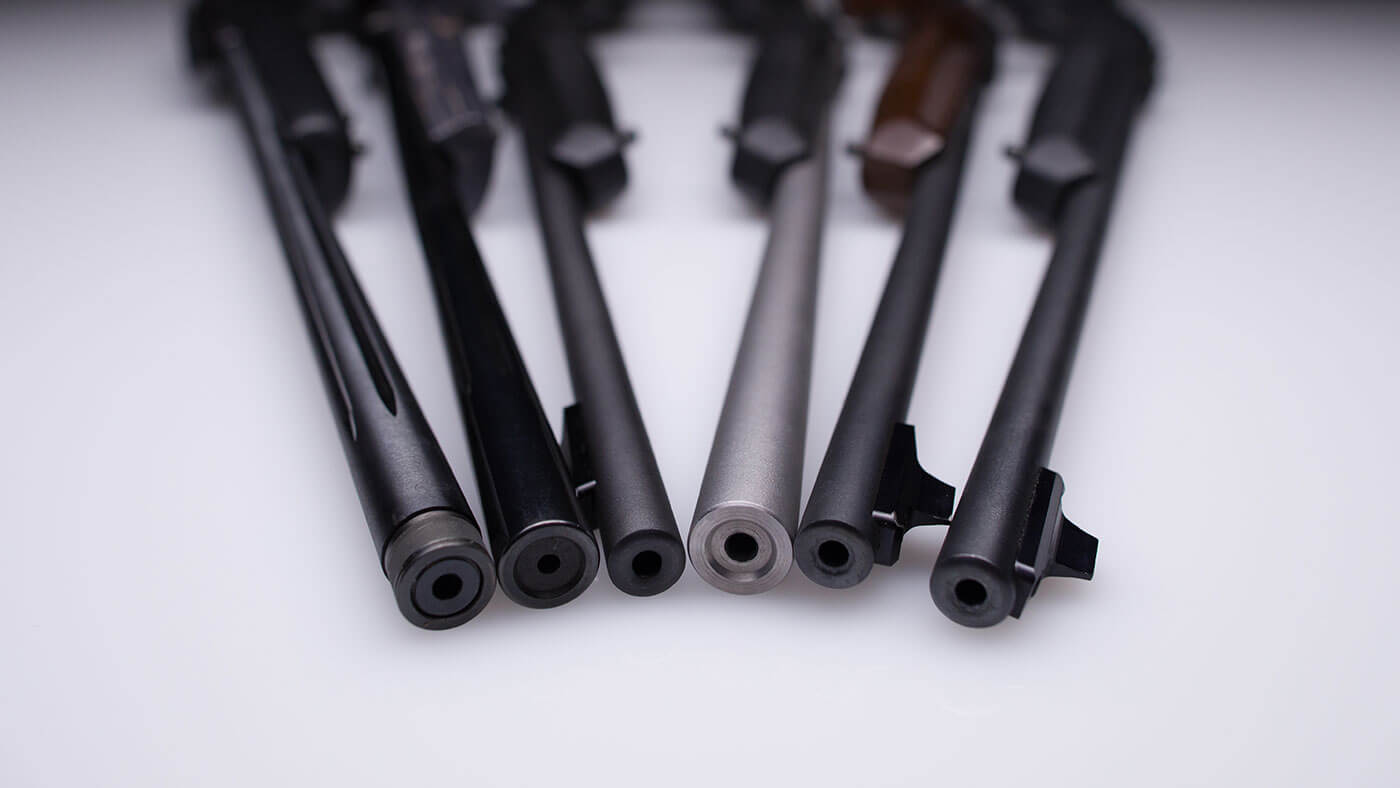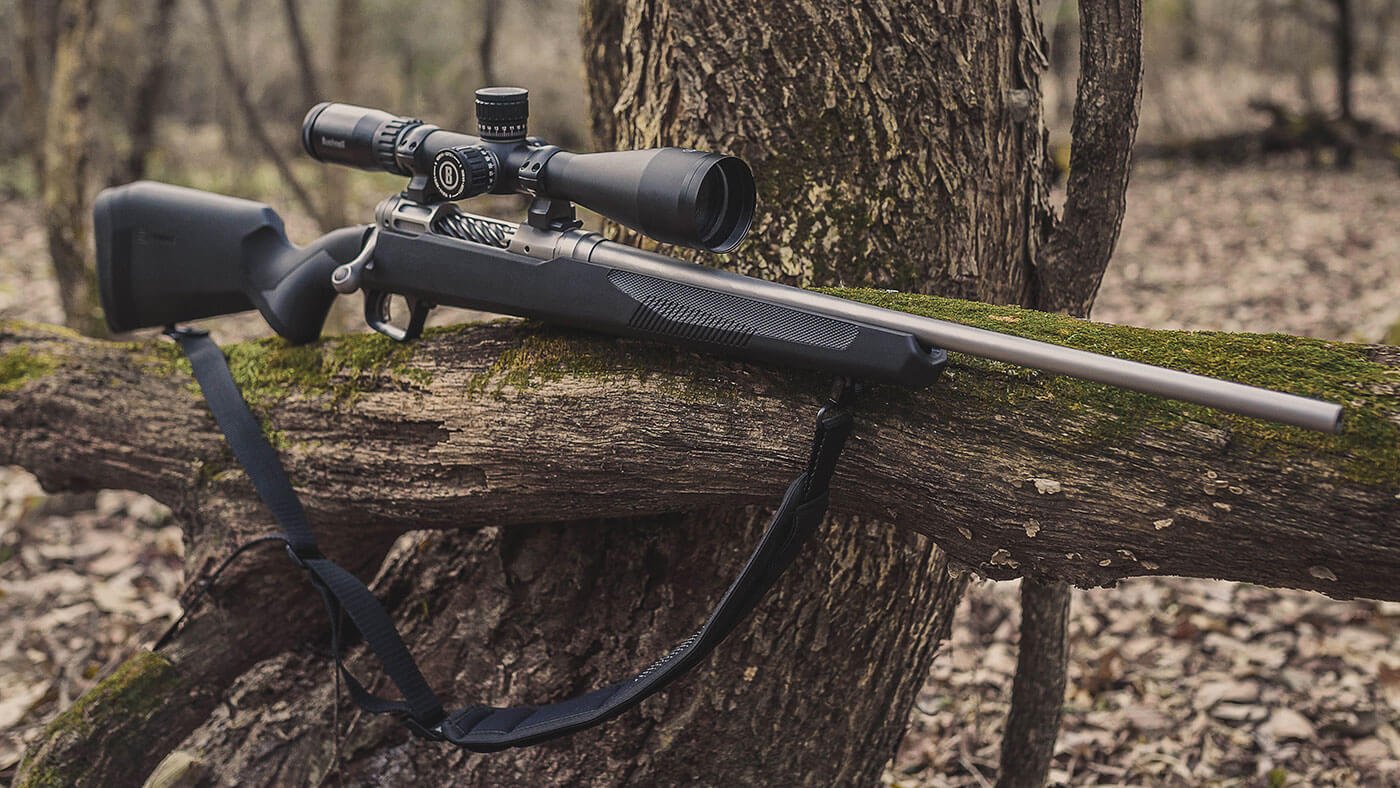- Savage Blog
- Barrel Basics: The 411 on Rifle Barrels
Barrel Basics: The 411 on Rifle Barrels

There's a lot to rifle barrels, and it's easy to get confused and feel overwhelmed. If you keep it simple and understand fundamental truths, you'll have no trouble finding a barrel that will serve your shooting purposes well.
Not all rifle barrels are created equal, and some are better than others. Innovation in the barrel-making process has changed the shooting game. With that noted, carbon fiber-wrapped barrels have not replaced carbon and stainless steel barrels, and in the opinion of this shooter, they shouldn't.
Are there advantages to carbon carbon-fiber wrapped barrels? Of course. However, you'll pay for those advantages, and before you do, you need to know what those advantages are and if they will help you be a more successful hunter.
Don't tar and feather me. I get the advantages of carbon-fiber wrapped barrels, and I'm a fan. I shoot a carbon vertical compound bow, and it's the best bow I've ever shot. It's lightweight, durable, accurate, and warm to the touch. However, I have multiple aluminum-riser bows, which also perform remarkably. The choice when it comes to barrel make is ultimately yours. Here's some things you need to know.
Stainless Steel

More animals have been harvested, and more shooting competitions won with stainless steel barrels than you can shake a stick at. Most modern-day steel barrel builds promote accuracy well beyond the ability of most shooters. If you have a rifle with a stainless steel barrel you love, my advice is to stick with it. If you're in the market for a new rifle, stainless steel has been getting the job done since the 1930s. If you want to save some change and still get a super accurate rifle with a barrel that will resist rust and corrosion in wet or humid environments, stainless steel barrels are a great choice.
Carbon Steel

Another barrel type that has been around for a long time, carbon steel barrels, are a win. Traditionally, carbon steel barrels are a tad harder than stainless steel barrels, but that's not always the case. Hardness depends on the barrel's Rockwell rating. When you think of barrel hardness, remember that a softer barrel will be more malleable — bend, not break — and a more rigid barrel will be more accurate, but there is no bend, only break. There are tradeoffs for sure. Barrels are heat-treated to achieve the desired Rockwell rating, so be sure and look into this when making your selection.
One drawback of carbon steel is it will rust, and rust is barrel cancer. You must stay on top of moisture control if you have a carbon steel barrel. Of course, numerous finishes on the market today, like Cerakote, resist rust and boost barrel protection. My only concern with Cerakote over carbon steel is that if the Cerakote chips, moisture can slip in inside, and the carbon steel, over time, can rust.
Carbon-Fiber Wrapped

The latest barrel innovation, carbon-fiber wrapped barrels, is gaining a big following. There are a couple of ways carbon-fiber barrels are crafted. One method is to slide a carbon tube over a skinny steel barrel, and the other is weaving and wrapping carbon over a slender steel barrel. Both ways are effective, and I simplified the building process greatly. When carbon is wrapped over the steel, an adhesion is used to cure the carbon and lock it. The significant advantages of a carbon-style barrel are weight reduction and the fact that carbon will draw heat away from the steel to cool the barrel down faster. This helps to give you the best of both worlds as the barrel handles heat like a heavy profile barrel while maintaining the light weight of a thinner steel barrel. Many mountain hunters appreciate the lightweight nature carbon provides. Many will argue that accuracy is greatly improved, along with overall barrel durability, but I'm not ready to hang my hat on those claims yet. Another excellent feature of carbon is it will not rust. The final advantage of a carbon barrel is they are full diameter steel at the muzzle end allowing them to be threaded to standard thread pitches. This is something that cannot always be done safely with thin profile all steel barrels.
Twist Rate

The twist rate of rifle barrels is something else to keep in mind. We could dive down a rabbit hole on this, but I'm a fan of keeping it simple. Depending on the caliber, most rifles will feature a twist rate designed to suit that caliber.
The twist rate is how often the rifling turns per one revolution inside the barrel. For instance, a 1:6 twist rate means the rifling spins one complete revolution over six inches of barrel length, and this is a prolonged twist rate. A 1:8 twist rate means the rifling turns one full revolution over eight inches of barrel length.
Take a 223 Rem, for instance. A standard twist rate for a 223 Rem is a 1:7 to 1:9. Take a 300 WSM, and you'll see twist rates like 1:10 or even 1:12. The reason for this difference comes down to a combination of of bullet length, diameter, weight, profile and velocity. The idea is to maximize bullet stabilization down the length of the barrel. Barrel and ammunition manufacturers often work together to find the optimum twist rate for each cartridge to ensure factory rifles are the optimal twist to work with factory ammunition.
Contour

Rifle barrel contour refers to the shape of the barrel of a rifle. The contour of the barrel can affect various aspects of a rifle's performance, including accuracy, weight, and heat dissipation. The most common types of barrel contours are straight, tapered, and fluted. A straight contour provides a consistent weight and thickness throughout the barrel, while a tapered contour gradually narrows towards the muzzle, reducing weight and increasing balance. Within the categories of tapered barrels there are a wide range of profiles available ranging from heavier varmint counter barrels to lightweight pencil barrels. These different levels of taper always try to find the right balance of weight, heat resistance, and handling for the application. Fluted contours have grooves cut into the barrel to reduce weight and increase surface area for improved cooling. Choosing the right barrel contour depends on the intended use of the rifle and personal preferences of the shooter.
Fluting

Rifle barrel fluting is a process in which grooves or channels are machined into the length of a rifle barrel. The purpose of fluting is to reduce the weight of the barrel without compromising its stiffness or accuracy. By removing material from the barrel, fluting can help dissipate heat and improve cooling, which can reduce barrel wear and increase the life of the barrel. Fluting can also enhance the aesthetics of the rifle, giving it a distinctive look. However, the process of fluting can be costly and may require specialized equipment and expertise, making it a relatively uncommon feature in mass-produced rifles.
Barrel Lengths

Like twist rate, barrel lengths are designed to maximize the performance of specific rifle calibers. It was once thought longer barrels were superior to shorter barrels regarding accuracy. While there may be some truth, modern short-build barrels are typically stiffer than longer designs and tend to be highly accurate.
Standard barrel lengths include 20, 22, 24, and 26 inches. It would help if you matched your barrel length to your hunting application. For instance, if you plan to roam the western mountains in search of elk, you'll want a 22- or 24-inch barrel for maneuverability and transport-across-the-terrain purposes. If you plan to sit and wait on the game, you may want to go with a longer barrel, especially if you're toting a long-action caliber that requires a longer barrel length to maximize the powder burn of your cartridge.
Powder burn depends on cartridge configuration. Take a 308 Win. for instance. Slap a 26-inch barrel on a 308 Win., and the barrel length would be somewhat overkill. The barrel does not need to be that long to maximize the cartridge's powder burn. You want to optimize powder burn within the cartridge, which will be affected by barrel length.
In laypeople's terms, you need a longer barrel to get maximum velocity performance from long-action rifles like a 300 Win. Mag, but short-action calibers like a .308 Win. can reach maximum velocity in a barrel with a shorter length.
Yes, there's more to barrels than meets the eye, and there are more truths and myths out there than wind in Wyoming. In this blog, I tried to keep the information simple and straightforward to give you a jumping-off point to kickstart your research.
I want to conclude this piece with a note on confidence. One of my favorite rifles of all time is Savage's 110. My caliber of choice when I purchased the rifle was a 270 WSM. The barrel measures 24 inches and is stainless steel. The twist rate is 1:10, and over the years, I've harvested elk, mule deer, white-tailed deer, and aoudad from 90 yards to 589 yards. Truth be told, the rifle is ultra-lightweight, and it doesn't have a pile of make-you-drool features. What it is, though, is a rifle that works perfectly for me and feels me with confidence, and confidence is everything.


